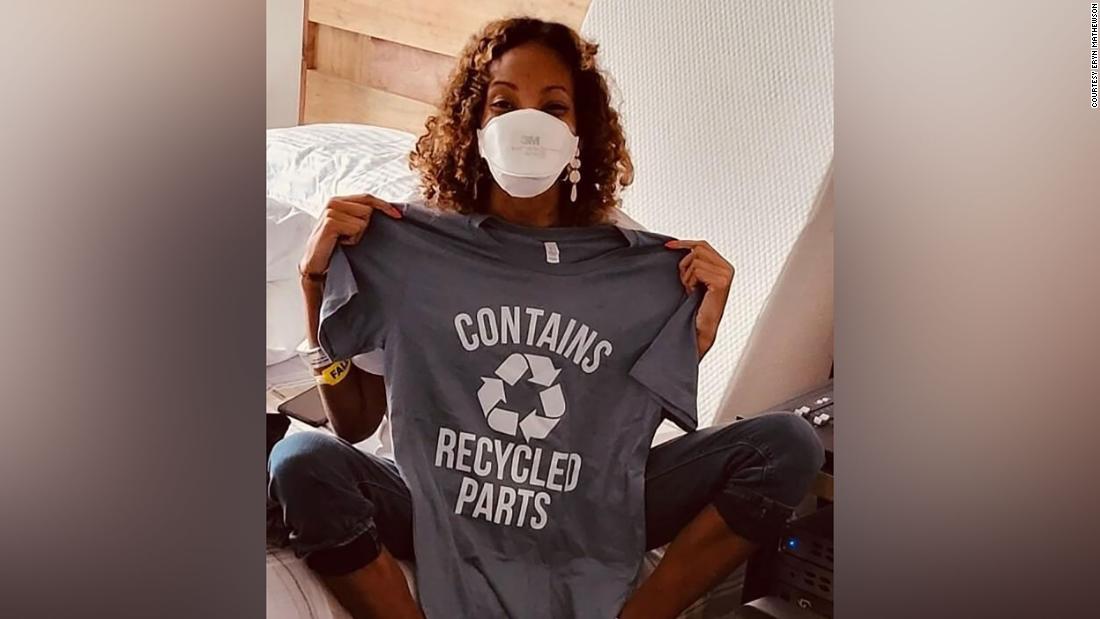My transplant opened my eyes to the need for donors for people of color
I was thrilled for Roth. He is not only alive, he is a recipient and witness of pure human kindness. Organs are finite resources, as are the donors – living and deceased – who are willing to share them.
I also have a donor to thank.
I had days before I went into a coma and died.
But surgeons, social workers and administrators sprang into action. Over the next few days, they found the liver of a young man who was the best match in terms of organ size, blood type and other factors.
The window to transplant his liver was eight to 12 hours after his death. Fortunately, he had expressed that he wanted to be a donor, or his family had made that decision. After many conversations, tests and an operation lasting almost eight hours, my life changed forever.
Timing is everything
How would I say thank you? An organ is not just any gift. And there is no guarantee that it will work properly.
I don’t have much personal information about my donor – only their medical issues, age and nationality. I would love to get in touch with his family one day, but for now I just hope that the thank you letter I sent through my organ procurement organization – which runs local organ recovery efforts – will be well received.
I also thank my medical team. I live in a time when transplants are common and often successful. A great-aunt died of liver failure in 1959, just a few years before procedures to replace these organs were possible. She was only 49 years old. The first successful human liver transplant was performed in 1963, but it wasn’t until 1967 that a liver transplant patient lived more than a year.
Today, survival rates are higher and recipients live much longer on average. There are protocols for determining who can donate and receive organs, but the need has always exceeded the availability.
I worry that black, Latino, and low-income patients are less likely to receive organ transplants than white and higher-income patients. They are also less likely to be donors. The reasons for this are the historical distrust of the healthcare system.
I wanted to know what prevents people from vulnerable communities from getting transplants and what is being done to fix the problem.
I wanted my experience with the transplant system to be the norm, not a miracle.
Organ donations could be higher
Most donors don’t look like me
Some ethnic minorities, such as Korean Americans, Samoans and Tongans, have a particularly hard time finding organs, he said.
Even though people of different races match each other, members of the same ethnic group tend to be compatible in terms of tissues, blood type, and other biological factors. Good donor-recipient matches lead to better outcomes for the patient and the transplant system itself. When more people from different racial backgrounds sign up to donate, there’s a better chance that more transplant candidates will find an organ when they need it.
The most wanted organ
“Whites are more likely to be transplanted than blacks. By far the most commonly listed organ is (the) kidney, and it’s also the only organ that the majority of non-whites are listed on,” said said Allan B. Massie, professor and director of NYU’s Center for Surgical and Transplant Applied Research Qualitative Core, via email.
Subscribe to the list
The biggest problem is “getting the transplant list,” said Dr. Jerry McCauley, new president of the United Network for Organ Sharing and medical director of transplant services at Thomas Jefferson University, and not being on it. can be a barrier to fairness in transplantation. .
“Black people on dialysis are less likely to be waitlisted for a kidney transplant than white people on dialysis,” Massie said via email.
Caplan said inequalities in general health and access to health care — issues related to socioeconomic status and history of discrimination — also affect who gets an organ and even who ends up needing it. first place.
“Poor minorities – Native Americans on the reservation, poor people in downtown Brooklyn, probably poor Hispanics like in Corpus Christi, Texas…a lot of undocumented,” Caplan said, “they’ll have more need transplants because obesity rates are higher, hypertension is not controlled and (they have) more diabetes.”
There’s also another culprit, according to Dr. Juan Carlos Caicedo, founder and director of Northwestern University’s Hispanic Transplant Program: Most US transplant centers have not implemented a multicultural or multilingual approach to care.
“Only 10% of these programs have a website translating different languages besides English,” he said.
Caicedo’s research indicates that centers that incorporate multiple languages and culturally appropriate care are successful in getting more Hispanic patients to become living donors.
“White patients have the highest chance of finding a perfectly matched donor. It’s 79%. The community with the lowest chance of compatibility is the black and African-American communities at 29%,” Yolangco said, adding that people from Asia and the Pacific have a 47% chance of finding a match, Hispanics or Latinos 48%, and Native Americans 60%.
It’s unfortunate, Caplan said, the need for transplants among some groups exceeds the number of organs available; it affects patients’ ability to find good partners, but it’s unfair when language, class and race also limit access to transplant care, he said.
Take a 2nd chance
The goal of the transplant system is to keep more people alive and healthy – that includes black women like me as well as low-wage people and those who don’t speak English as their first language.
My new liver has given me a second chance, which comes with more doctor’s appointments and more fear of life’s unpredictability. But there’s also a commitment to bringing awareness to people of color about organ donation as well as a whole lot more love for organ donors, especially the man who saved my life.


Comments are closed.